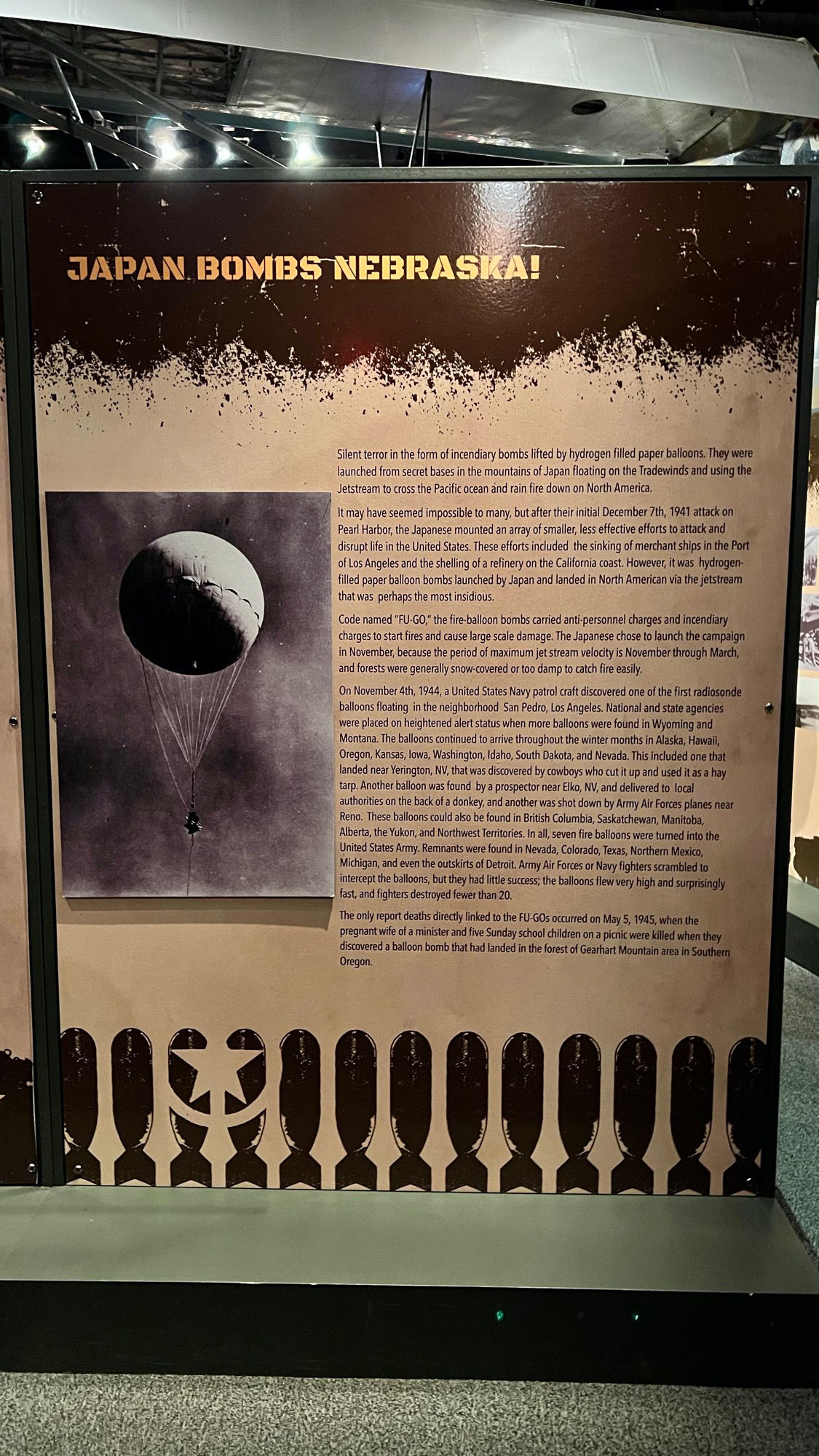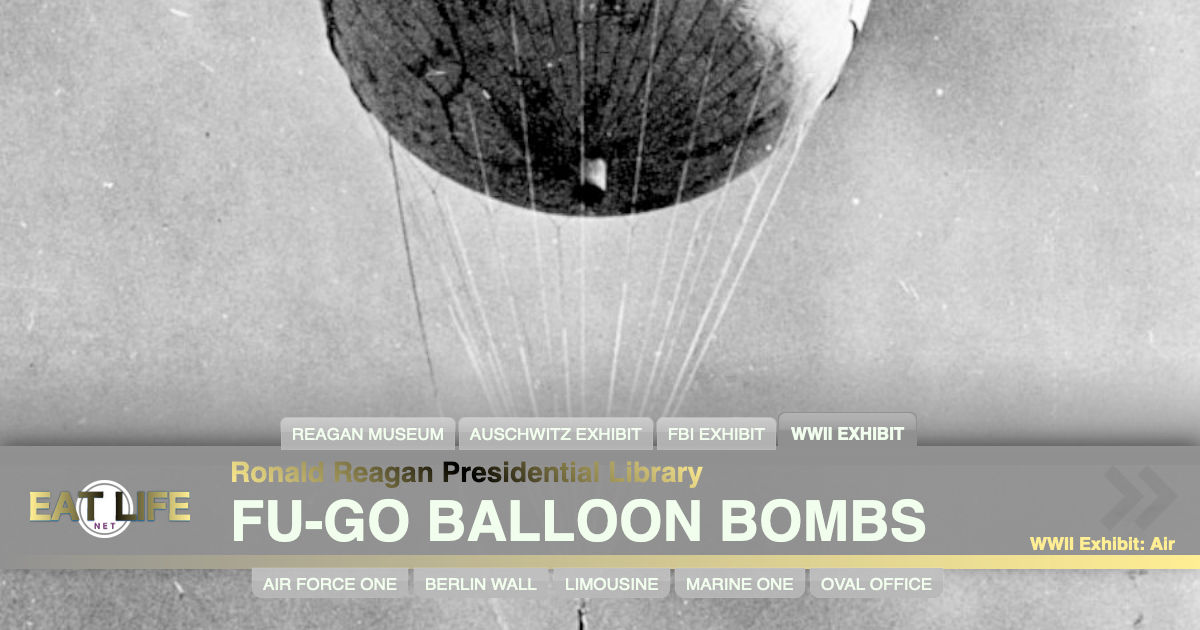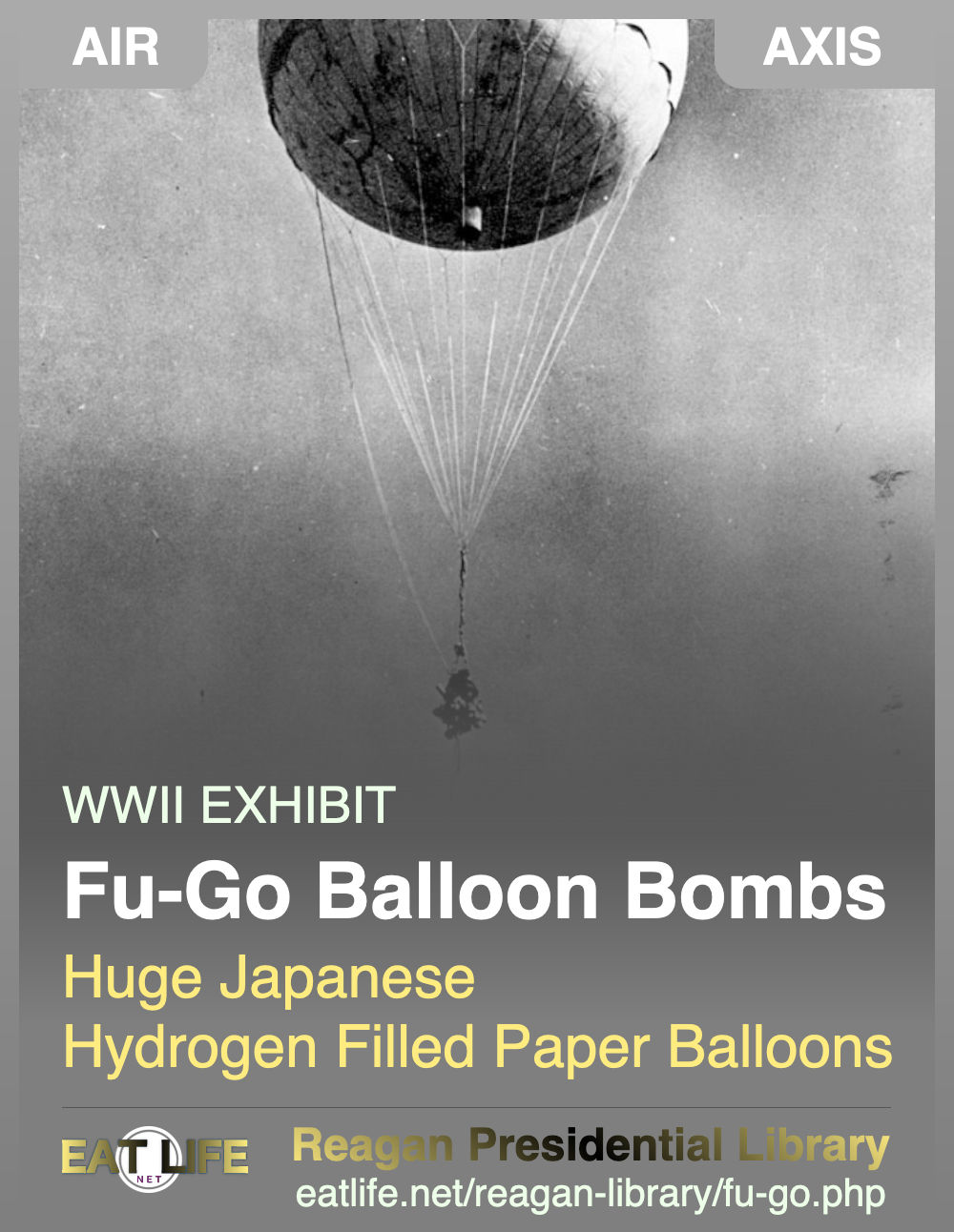Japan launched over 9,000 huge 30 foot diameter hydrogen fire-balloon bombs towards the USA using the trade winds and the jet stream to cross the Pacific Ocean. They chose to launch the campaign in November when there is maximum jet stream velocity. Lucky for USA during the winter the forests are snow-covered or too damp to catch fire easily. About 300 balloons were found or observed in the U.S., Canada, and Mexico but the USA gave zero mention of it in the news just to baffle the Japanese.

Silent terror in the form of incendiary bombs lifted by hydrogen filled paper balloons. They were launched from secret bases in the mountains of Japan floating on the trade winds and using the jet stream to cross the Pacific ocean and rain fire down on North America.
It may have seemed impossible to many, but after their initial December 7th, 1941 attack on Pearl Harbor, the Japanese mounted an array of smaller, less effective efforts to attack and disrupt life in the United States. These efforts included the sinking of merchant ships in the Port of Los Angeles and the shelling of a refinery on the California coast. However, it was hydrogen-filled paper balloon bombs launched by Japan and landed in North American via the jet stream that was perhaps the most insidious.
Code named "FU-GO," the fire-balloon bombs carried anti personnel charges and incendiary charges to start fires and cause large scale damage. The Japanese chose to launch the campaign in November, because the period of maximum jet stream velocity is November through March. However, during the winter the forests were generally snow-covered or too damp to catch fire easily.
 On November 4th, 1944, a United States Navy patrol craft discovered one of the first radiosonde balloons floating in the neighborhood San Pedro, Los Angeles.
National and state agencies were placed on heightened alert status when more balloons were found in Wyoming and Montana.
The balloons continued to arrive throughout the winter months in Alaska, Hawaii, Oregon, Kansas, Iowa, Washington, Idaho, South Dakota, and Nevada.
On November 4th, 1944, a United States Navy patrol craft discovered one of the first radiosonde balloons floating in the neighborhood San Pedro, Los Angeles.
National and state agencies were placed on heightened alert status when more balloons were found in Wyoming and Montana.
The balloons continued to arrive throughout the winter months in Alaska, Hawaii, Oregon, Kansas, Iowa, Washington, Idaho, South Dakota, and Nevada.
- This included one that landed near Yerington, NV, that was discovered by cowboys who cut it up and used it as a hay tarp.
- Another balloon was found by a prospector near Elko, NV, and delivered to local authorities on the back of a donkey
- Another was shot down by Army Air Forces planes near Reno.
These balloons were also be found or seen in British Columbia, Saskatchewan, Manitoba, Alberta, the Yukon, and Northwest Territories. In all, seven fire balloons were turned into the United States Army. Remnants were found in Nevada, Colorado, Texas, Northern Mexico, Michigan, and even the outskirts of Detroit. Army Air Forces or Navy fighters scrambled to intercept the balloons, but they had little success; the balloons flew very high and surprisingly fast, and fighters destroyed fewer than 20.
The only reported deaths directly linked to the FU-GOs occurred on May 5, 1945, when the pregnant wife of a minister and five Sunday school children on a picnic were killed when they discovered a balloon bomb that had landed in the forest of Gearhart Mountain area in Southern Oregon.
WIKIPEDIAFu-Go
Code FU = Weapon
Was an incendiary balloon weapon deployed by Japan against the United States during World War II. It consisted of a hydrogen-filled paper balloon 33 feet in diameter, with a payload of four 11-pound incendiary devices and one 33-pound high-explosive anti-personnel bomb. The uncontrolled balloons were carried over the Pacific Ocean from Japan to North America by fast, high-altitude air currents, today known as the jet stream, and used a sophisticated sandbag ballast system to maintain their altitude. The bombs were intended to ignite large-scale forest fires and spread panic.Between November 1944 and April 1945, the Imperial Japanese Army launched about 9,300 balloons from sites on coastal Honshu, of which about 300 were found or observed in the U.S., Canada, and Mexico. The bombs were ineffective as fire starters due to damp seasonal conditions, with no forest fires being attributed to the offensive. A U.S. media censorship campaign prevented the Imperial Army from learning of the offensive's results. On May 5, 1945, six civilians were killed by one of the bombs near Bly, Oregon, becoming the war's only fatalities in the continental U.S. The Fu-Go balloon bomb was the first weapon system with intercontinental range, predating the intercontinental ballistic missile.
The first balloons were launched on November 3, 1944. Some balloons in each of the launches carried radiosonde equipment instead of bombs, and were tracked by direction finding stations to follow their progress. Two weeks after the discovery of the B-Type balloon off San Pedro, an A-Type balloon was found in the ocean off Kailua, Hawaii, on November 14. More were found near Thermopolis, Wyoming, on December 6 (with an explosion heard by witnesses, and a crater later located) and near Kalispell, Montana, on December 11, followed by finds near Marshall and Holy Cross, Alaska, and Estacada, Oregon, later in the month.
Authorities were placed on heightened alert, and forest rangers were ordered to report landings and recoveries. The balloons continued to be discovered across North America, with sightings and partial or full recoveries in Alaska, Arizona, California, Colorado, Hawaii, Idaho, Iowa, Kansas, Michigan (where an incendiary bomb was found at Farmington in the easternmost incident), Montana, Nebraska, Nevada, North Dakota, Oregon, South Dakota, Texas, Utah, Washington, and Wyoming; in Canada in Alberta, British Columbia, Manitoba, Saskatchewan, and the Northwest and Yukon Territories; in Mexico in Baja California Norte and Sonora; and at sea. By August 1945, the U.S. Army had recorded 285 balloon incidents (28 by January, 54 in February, 114 in March, 42 in April, 16 in May, 17 in June, and 14 in July)
Censorship campaign
On January 4, 1945, the U.S. Office of Censorship sent a confidential memo to newspaper editors and radio broadcasters asking that they give no publicity to balloon incidents; this proved highly effective, with the agency sending another memo three months later stating that cooperation had been "excellent" and that "there is no question that your refusal to publish or broadcast information about these balloons has baffled the Japanese, annoyed and hindered them, and has been an important contribution to security."Starting in mid-February 1945, Japanese propaganda broadcasts falsely announced numerous fires and a panicked American public, further claiming casualties in the hundreds or thousands.









